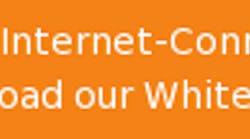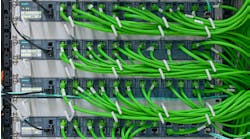As a journalist tracking the ongoing digital transformation of industry, I sometimes feel I live at the intersecting apexes of two different Gartner hype cycles: One on the Industrial Internet of Things (and all its related permutations) and another on content marketing. Every technology provider serving the industrial market feels the need to establish thought leadership by publishing its own white papers or research reports—and overwhelmingly of late those papers and reports are slanted to the IIoT. For example, a simple Google search on the “Industrial Internet of Things” returns some 55 million matches.
Indeed, the genesis for this print edition of Smart Industry, “The Thought Leadership Issue,” was to apply a somewhat higher level search algorithm to all the relevant content floating about in cyberspace. We sought to summarize for you some of the most salient content on the topic we could find—and point you in the direction of more information.
First off, we have an exclusive look at recent research conducted by the MPI Group, Inc., on the state of IoT adoption across U.S. manufacturing. The report looks at the maturity of survey respondents’ IoT awareness—both for improving their internal processes and for reinventing the performance of the products they sell.
The balance of the features in this issue are the start of a series we’re calling Required Reading on the Industrial IoT. Included are summary highlights of four freely available reports that we believe will substantially advance your understanding of the opportunities and challenges presented by this stage of industry’s digital transformation.
While much of the published thought leadership on the IIoT to date dwells on the value to be delivered by the technologically straightforward connection and integration of formerly siloed information systems, it’s hard to not get even more excited about the longer-term potential of the Industrial IoT.
More advanced concepts of dynamic composability, for example, allude to resilient systems of systems that can understand each other’s capabilities; that can negotiate with one another and effectively work together in the context of a larger, commonly understood purpose.
Google DeepMind’s AlphaGo project recently offered a glimpse of this exciting future when in March it defeated a human master of the complex and ancient strategy game Go. Unlike the brute-force chess victory of IBM’s Deep Blue 20 years ago, DeepMind learned to recognize on its own successful strategies that human programmers could not have articulated. Whether applied for good or for evil (as some worry), such advanced machine learning capabilities together with resiliently connected digital systems undoubtedly will bring the IIoT to a whole new level.
Keith Larson, VP Content
[email protected]


